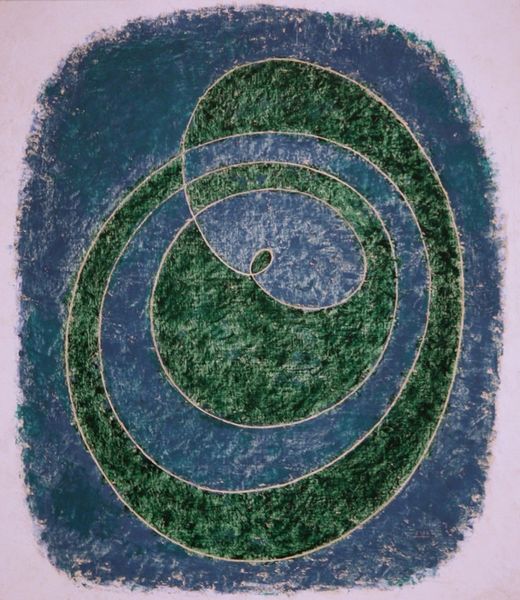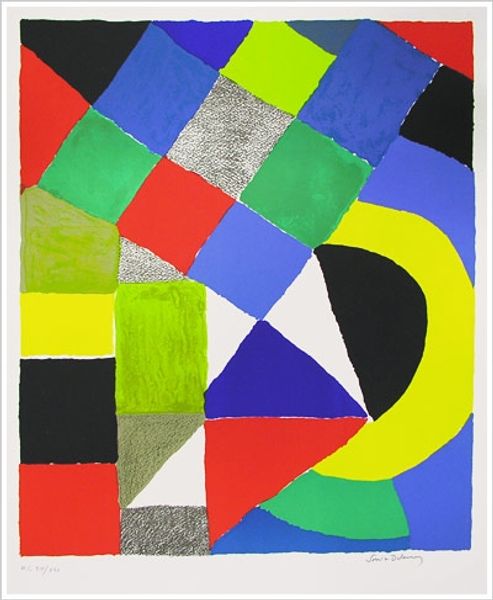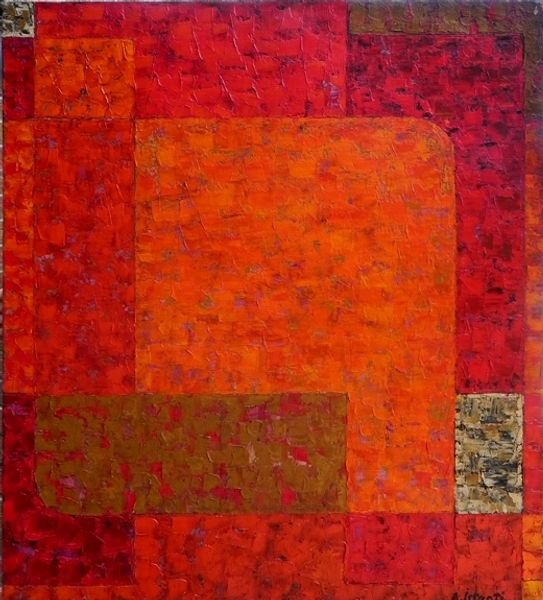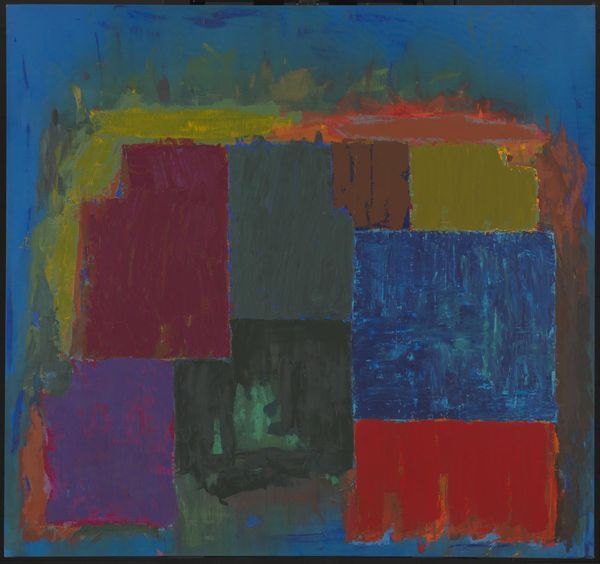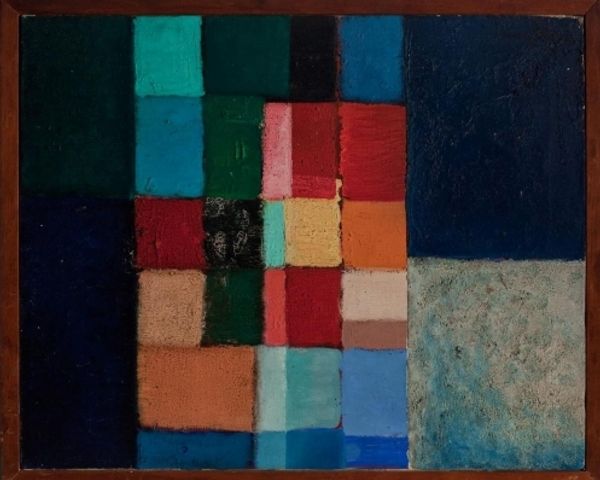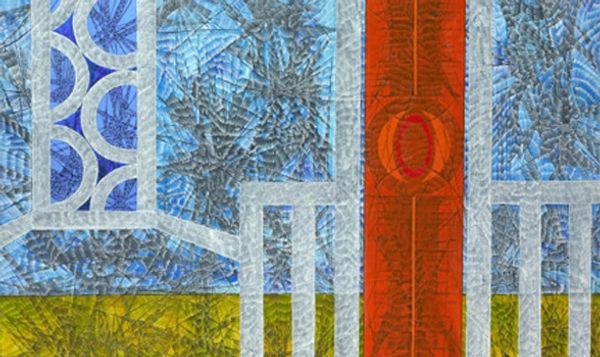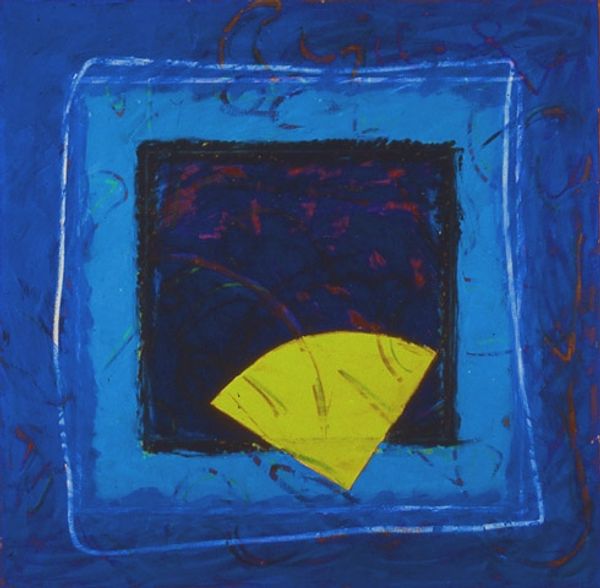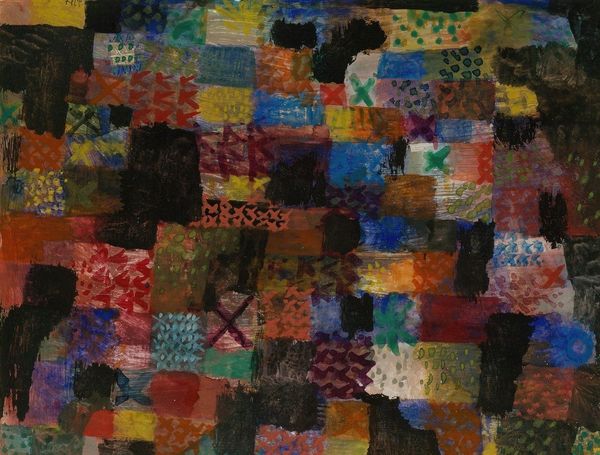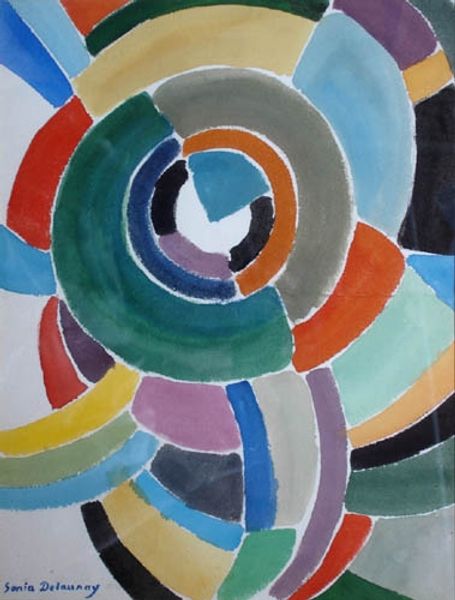
mixed-media, painting, oil-paint
#
abstract-expressionism
#
abstract expressionism
#
mixed-media
#
abstract painting
#
painting
#
oil-paint
#
pattern
#
form
#
abstract pattern
#
acrylic on canvas
#
organic pattern
#
geometric
#
geometric-abstraction
#
modernism
Dimensions: 15 x 25 cm
Copyright: Johannes Itten,Fair Use
Curator: Johannes Itten completed “Kreise und Quadrate,” or "Circles and Squares," in 1963, an oil and mixed media painting very much in the abstract expressionist style. Editor: The title is certainly apt! I am immediately struck by the painting’s rather muted palette, punctuated by those thick, textured gold squares. There’s a sort of earthy, contained energy here. Curator: Itten, of course, was deeply engaged with color theory and the psychological impact of geometric forms. He famously taught at the Bauhaus, so his interests extended to the pedagogical as well as the artistic. We can see this in his structured use of squares within the work. Editor: It feels like an ordered challenge to tradition somehow. There's an attempt to democratize color relations, or perhaps visualize harmonic principles that would reject accepted, privileged hierarchies within color palettes. The way he juxtaposes the rigid squares against the imperfect, hand-painted circle further complicates this tension. Curator: Precisely! Consider the context of the 1960s—a period defined by both radical experimentation and the desire to establish new formal languages. Itten’s background at the Bauhaus certainly positions him at the nexus of this artistic and cultural moment. Abstraction after the second world war held symbolic resonance in rebuilding aesthetic values. Editor: Yes, and in its rejection of representational art, abstraction became a visual language of resistance against dominant power structures. By creating such abstract images, artists can bypass established modes of seeing and interpreting the world. Curator: Absolutely, and Itten, along with others like Kandinsky, understood art’s potential as a spiritual and social tool. Though by this stage of his career, he had removed himself from art world politics somewhat and concentrated on art education and his own theories. Editor: Regardless of the artist's own intentions, Itten’s focus on essential forms invites the viewer to contemplate our own interpretations. Looking at the piece now, I’m left thinking about the tension between chaos and order. Curator: It has certainly provided fresh perspectives on how we interpret modern art’s radical project! Editor: Indeed, thinking about his work through today’s socio-political lens certainly amplifies some hidden, yet powerful nuances.
Comments
No comments
Be the first to comment and join the conversation on the ultimate creative platform.
